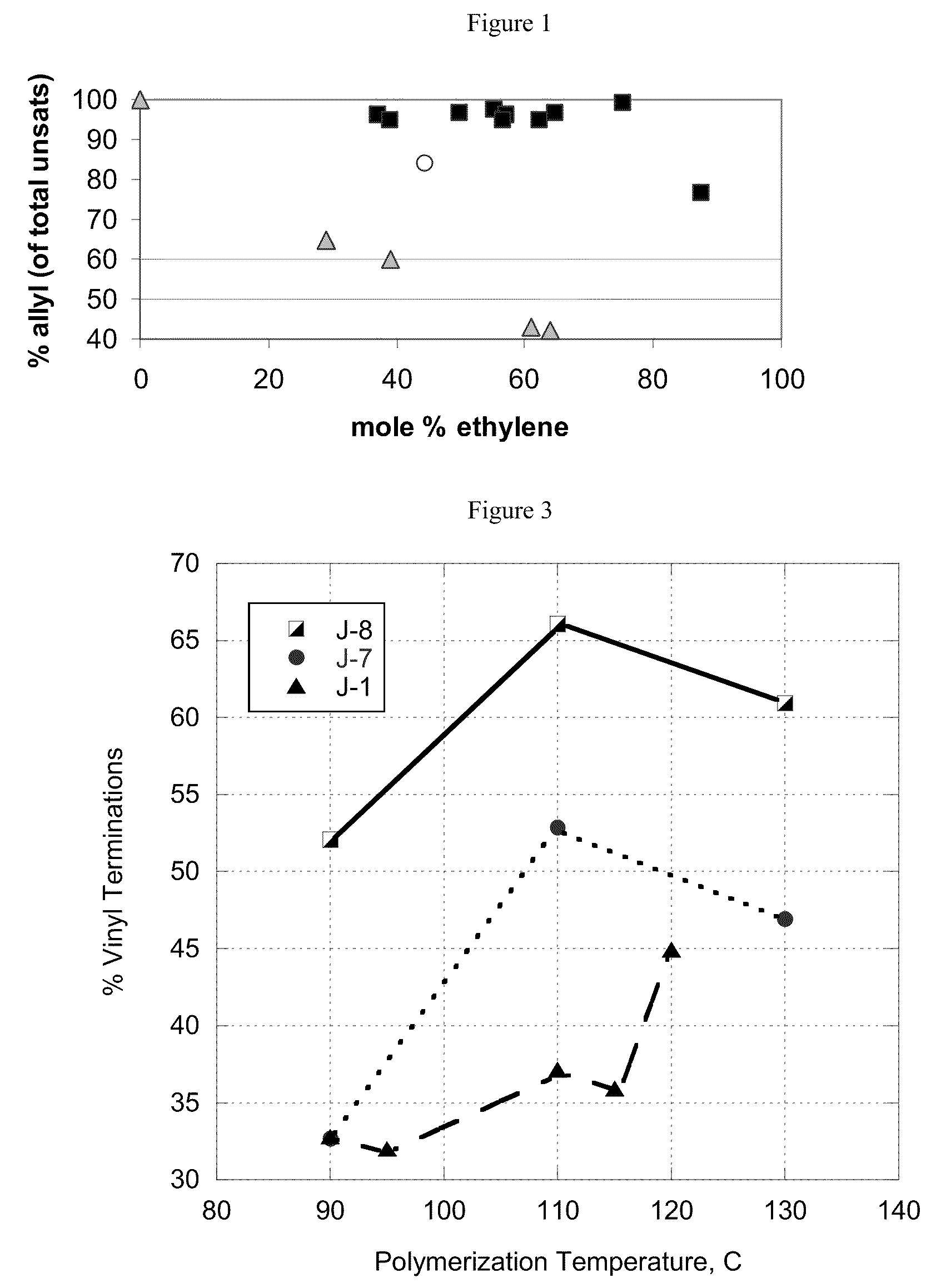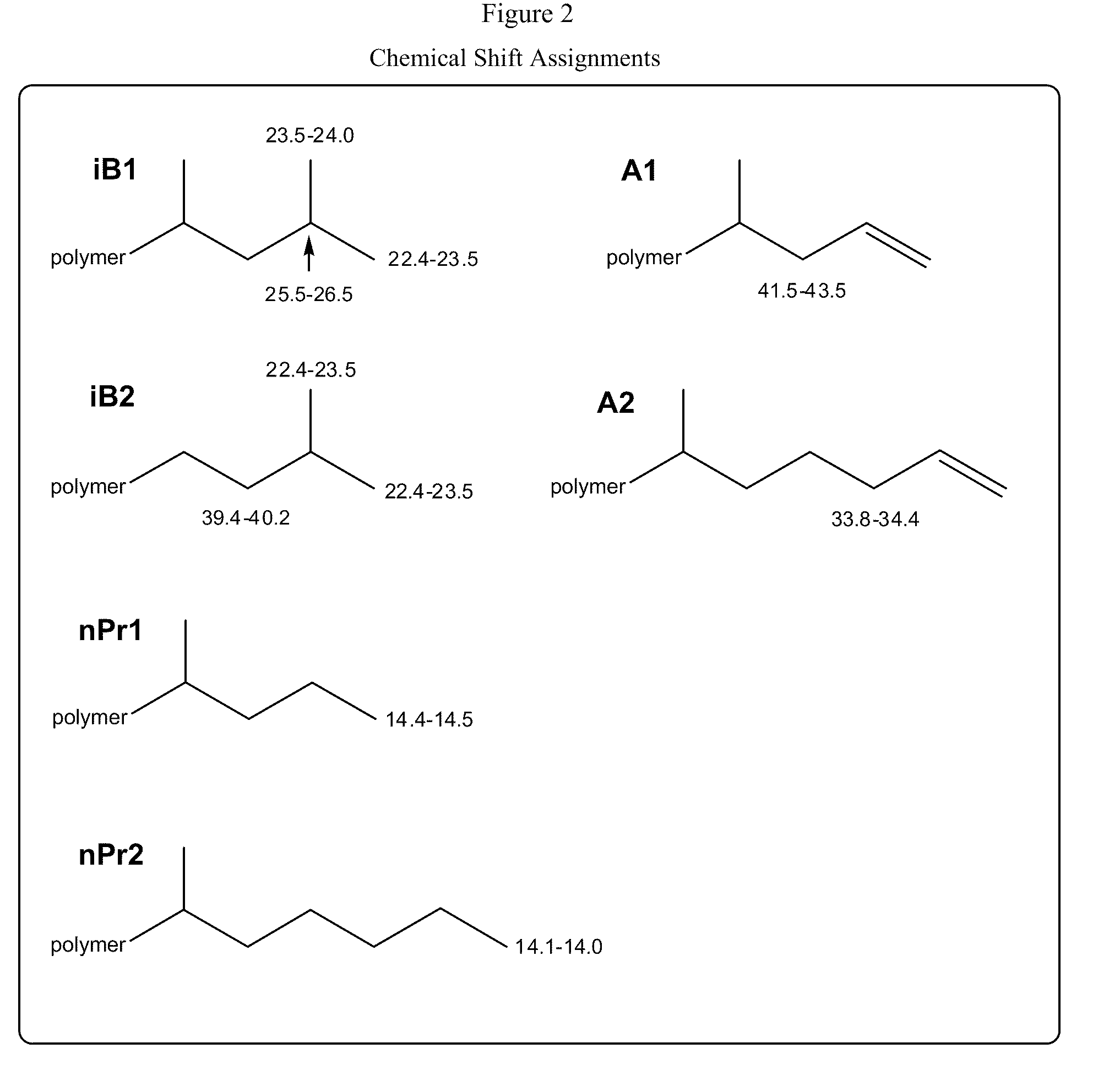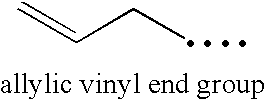Functionalized high vinyl terminated propylene based oligomers
a technology of propylene and high vinyl, applied in the field of oligomerization of olefin, can solve the problems of 50 % vinyl and about 50 % vinylidene terminals
- Summary
- Abstract
- Description
- Claims
- Application Information
AI Technical Summary
Benefits of technology
Problems solved by technology
Method used
Image
Examples
examples
[0297]The foregoing discussion can be further described with reference to the following non-limiting examples.
Product Characterization
[0298]Products were characterized by 1H NMR and 13C NMR as follows:
13C NMR
[0299]13C NMR data was collected at 120° C. in a 10 mm probe using a Varian spectrometer with a 1Hydrogen frequency of at least 400 MHz. A 90 degree pulse, an acquisition time adjusted to give a digital resolution between 0.1 and 0.12 Hz, at least a 10 second pulse acquisition delay time with continuous broadband proton decoupling using swept square wave modulation without gating was employed during the entire acquisition period. The spectra were acquired using time averaging to provide a signal to noise level adequate to measure the signals of interest. Samples were dissolved in tetrachloroethane-d2 at concentrations between 10 to 15 wt % prior to being inserted into the spectrometer magnet.
[0300]Prior to data analysis spectra were referenced by setting the chemical shift of th...
example a
[0355]In separate runs, each of the (co)polymers prepared in the Examples above and pulverized maleic is charged at a ratio of 1.6 moles of maleic anhydride to one mole of (co)polymer under dry nitrogen and at atmospheric pressure to a 100 ml pressure reactor equipped with a stirrer and a thermocouple and heated by means of an electric heating mantle. The reaction mixture is heated to 70° C., after which the reactor is gently purged by bubbling dry nitrogen through the liquid reaction mixture for 15 min. The purging is then terminated and the reactor sealed. The reactor temperature is then raised to a temperature of 220° C. and is maintained at that temperature for 6 hours. while stirring. The reaction is then terminated by cooling the reaction mixture to about 60° C., after which the liquid mixture is transferred to a glass beaker. Unreacted maleic anhydride is stripped off by passing dry nitrogen gas through the liquid at 140° C. The liquid product so prepared in each run is expec...
example b
[0356]In separate runs, dispersant materials are prepared utilizing liquid products as prepared in Example A. The succinic acid anhydride substituted polymers are dissolved in an equal amount by weight of mineral oil (S150NL). To the polymer solution is added tetraethylene pentamine (TEPA), and the mixture is heated to 140° C. under nitrogen while stirring for about 2 to 4 hours. The molar ratio of total polymer to polyamine in terms of succinic acid equivalents to TEPA charged is 2 to 1.
PUM
| Property | Measurement | Unit |
|---|---|---|
| melting point | aaaaa | aaaaa |
| Tg | aaaaa | aaaaa |
| melting point | aaaaa | aaaaa |
Abstract
Description
Claims
Application Information
 Login to View More
Login to View More - R&D
- Intellectual Property
- Life Sciences
- Materials
- Tech Scout
- Unparalleled Data Quality
- Higher Quality Content
- 60% Fewer Hallucinations
Browse by: Latest US Patents, China's latest patents, Technical Efficacy Thesaurus, Application Domain, Technology Topic, Popular Technical Reports.
© 2025 PatSnap. All rights reserved.Legal|Privacy policy|Modern Slavery Act Transparency Statement|Sitemap|About US| Contact US: help@patsnap.com



